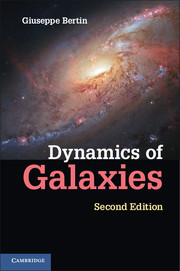Book contents
- Frontmatter
- Contents
- Preface to the Second Edition
- Preface to the First Edition, 2000
- Acknowledgments
- PART I Basic Phenomenology
- PART II Physical Models
- PART III Spiral Galaxies
- PART IV Elliptical Galaxies
- PART V In Perspective
- 25 Selected Aspects of Formation and Evolution
- 26 Galaxies and Gravitational Lensing
- 27 Self-Gravitating Accretion Disks
- Bibliography
- Index of objects
- Index
25 - Selected Aspects of Formation and Evolution
from PART V - In Perspective
Published online by Cambridge University Press: 05 June 2014
- Frontmatter
- Contents
- Preface to the Second Edition
- Preface to the First Edition, 2000
- Acknowledgments
- PART I Basic Phenomenology
- PART II Physical Models
- PART III Spiral Galaxies
- PART IV Elliptical Galaxies
- PART V In Perspective
- 25 Selected Aspects of Formation and Evolution
- 26 Galaxies and Gravitational Lensing
- 27 Self-Gravitating Accretion Disks
- Bibliography
- Index of objects
- Index
Summary
The galaxies we see today owe their current structure to a combination of initial conditions, set by the processes that led to their formation, and a number of mechanisms that have shaped their evolution. Some regularities that we observe, in their morphology (such as the regularities captured by the Hubble classification scheme), in their overall luminosity profiles (exponential or R1/4), or in the existence of well-defined scaling laws (such as the luminosity-velocity relation for spirals and the fundamental plane for elliptical galaxies), demand a physical explanation in terms of formation and evolution.
The discussion here becomes necessarily speculative, especially because we lack strong and direct empirical constraints. It is true that distant quasars and gas-rich absorption systems detected at relatively high redshifts provide clues about the conditions under which galaxies were formed, and relatively normal galaxies have been observed out to z ≈ 5 (i.e., up to a lookback time greater than 90 percent of the age of the Universe) and beyond. Yet we lack the type of detailed quantitative structural information that has allowed us to develop a satisfactory picture of the dynamics of normal galaxies, as observed at z ≈ 0. Furthermore, even when we manage to obtain some data on their internal constitution, for example, in galaxies at z ≈ 1, we do not have direct information on the way such objects have evolved from their progenitors and are going to evolve into the systems that we see in the nearby Universe.
- Type
- Chapter
- Information
- Dynamics of Galaxies , pp. 391 - 417Publisher: Cambridge University PressPrint publication year: 2014

